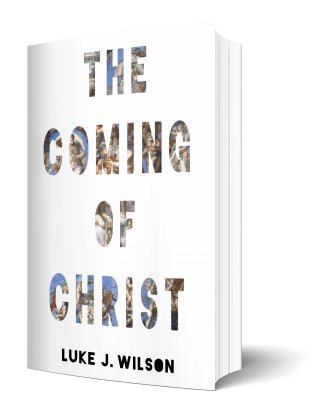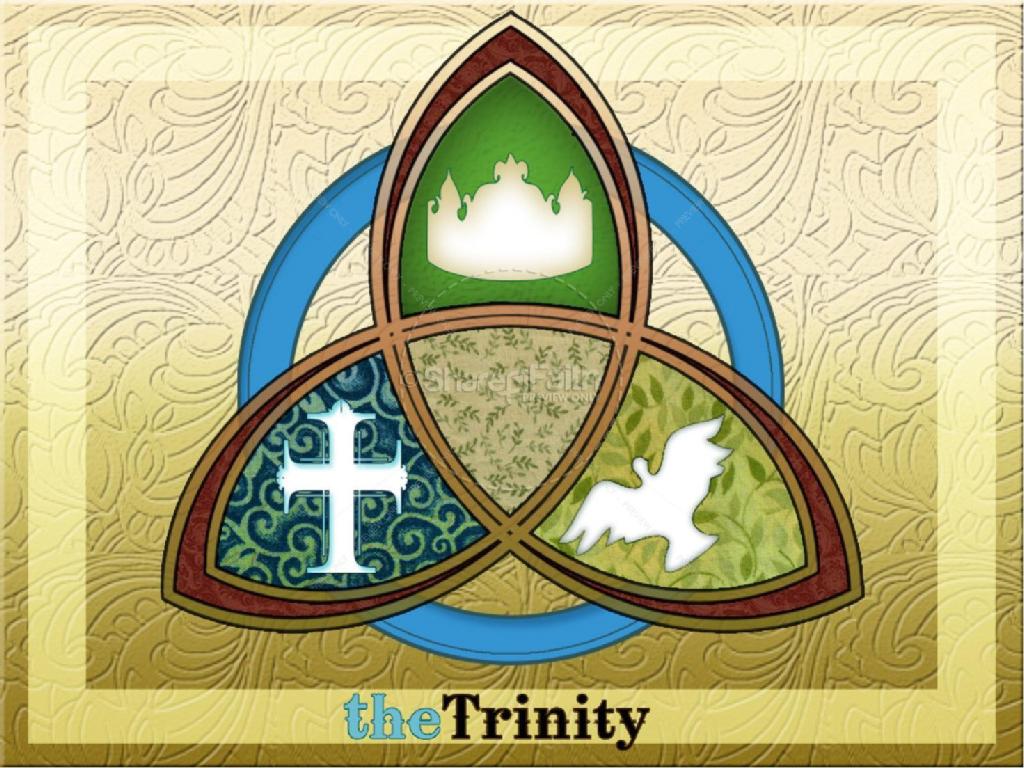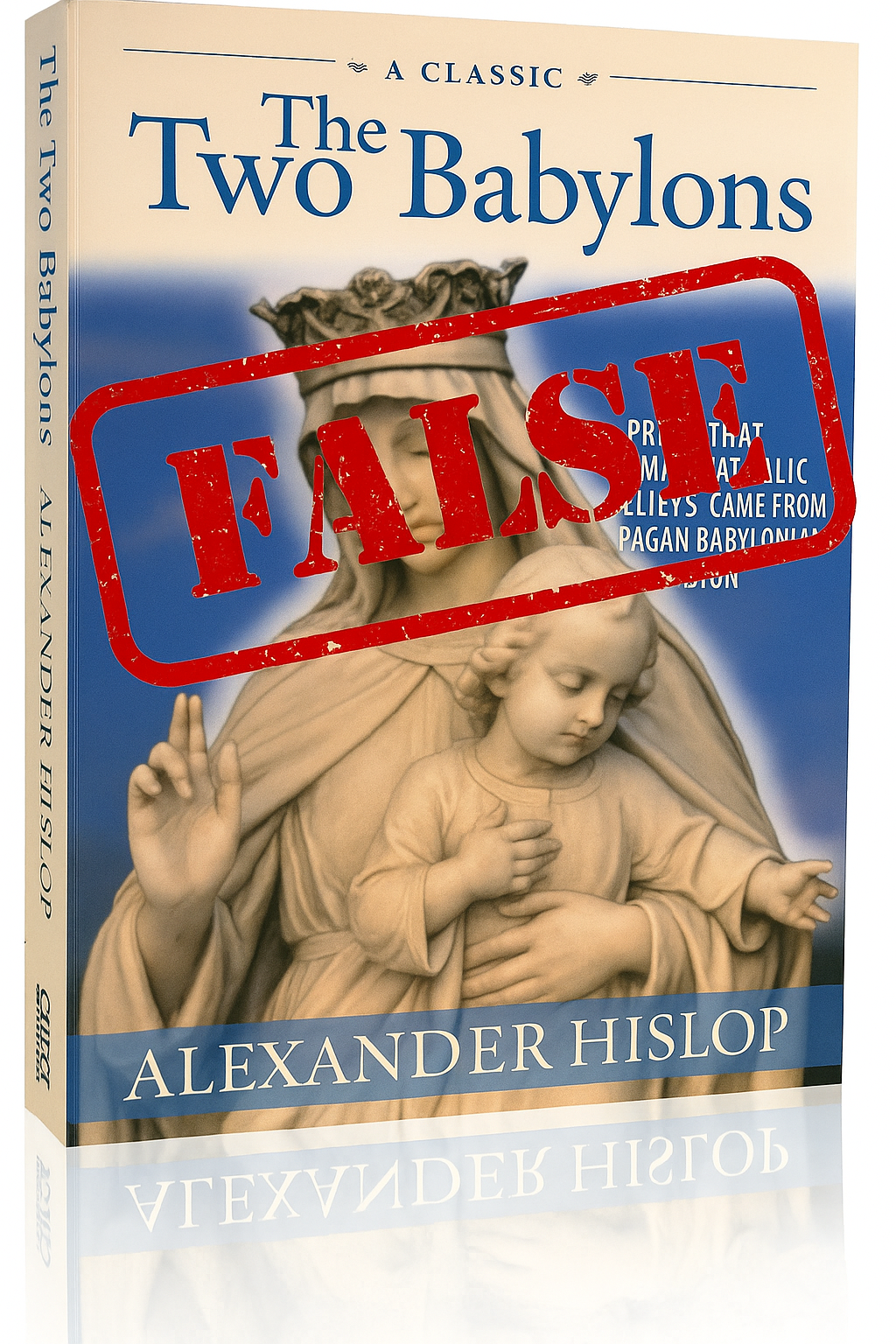Is The Rapture Biblical?

Most people have some idea about what the rapture is – or do they? Generally there is an idea or concept of a form of escapism from the world when Jesus returns, which happens pre, mid or post tribulation and in some connection to the millenium. Now, if you understood any of those terms, you are most likely on, or aware of, the Dispensationalism side of things.
There’s a lot of doctrine all bundled together in “end times” beliefs, and a fair bit of speculation around “the rapture” with its timing and logistics etc. which makes the whole thing a but murky, but nonetheless, it’s pretty much taken for granted as a staple belief within the Evangelical world. But has this always been so, and does it have any biblical basis?
In short: sort of.
What is The Rapture?
This is the primary verse where the doctrine finds its footing:
…then we that are alive, that are left, shall together with them be caught up in the clouds, to meet the Lord in the air: and so shall we ever be with the Lord.
— 1 Thessalonians 4:17
On the face of it, that is a pretty obscure (and short) text, yet so much has been written on and speculated about around this event.
I’m not going to cover every aspect of rapture doctrine here, but rather want to just highlight the context of this verse and its parallels in Paul’s other letters, as this seems to get lost under centuries of doctrinal baggage, which, incidentally, also the leads to the next point to look at: is the rapture biblical?
The origin of The Rapture
The word “rapture” itself comes from the Latin word rapere, which means: “to seize” or “to abduct”. It is a translation from the Greek word that is rendered as “caught up” (ἁρπάζω / harpázō) in our English Bibles today.
For many, asking if this belief is biblical is a non-starter because it is assumed so based on 1 Thess. 4 so obviously it is. But this is a presupposition, reading the modern ideas of what “the rapture” means into the text. The modern idea being that Jesus comes back briefly (and maybe secretly), whooses all the Christians into the sky and takes them to heaven, away from all the troubles on the earth, before coming back later to do a proper “second coming”.
John Nelson Darby, a 19th-century theologian, is often credited with creating this premillennial rapture doctrine, followed closely by C.I. Scofield who wrote a best-selling annotated Bible which promoted Darby’s rapture views in its footnote commentary. This particular Bible became wildly popular across America in the early 1900s and ended up solidifying the futurist dispensational viewpoint for generations to come within Evangelicalism.
Despite the popularity of Scofield’s Bible, what it (and Darby) taught was a novel idea which had not been seen nor heard of before in the previous 1800 years of Church History, yet many Christians accepted it without hesitation, likely due to it being part of the exposition alongside the Scripture they were reading, and therefore a seeming authority.
I realise there is somewhat of an irony here in that I’m acting similarly like an authority telling you that this belief is wrong whereas Scofield was writing as though it were accurate, but in an even more ironic twist, just a handful of verses later, the same letter to the Thessalonians says to “test everything; hold fast to what is good” (1 Thess. 5:21). This is what I would invite you to do: don’t just take my word for it, test everything and see if what I say is accurate.
The context of The Rapture
So what is the context of these verses, if not about being whisked away into the sky with Jesus? A couple of things, but one slightly more obvious than the other, though still overlooked by people, I’ve noticed; the other requires knowing some more about the ancient Greco-Roman culture of the time.
Firstly, we only need go back a few verses to see what Paul is writing about here: he begins the passage in verse 13 by saying that he doesn’t want his readers to be “uninformed” about fellow Christians who have died, so that they “may not grieve as others do who have no hope” (i.e.: unbelievers). The main context here is about death and having hope through Jesus’ resurrection that they also will be resurrected when the time comes. Therefore, do not grieve the death of a loved one as we’ll see them again on that day. It’s a passage of comfort to the Thessalonica church, not one of escapism from “the great tribulation”.
Secondly, then, Paul is speaking of this resurrection event and the hope we should all have in it, using language which not only parallels his other great passage on the resurrection in 1 Cor. 15 (being changed in a “twinkling of an eye”), but also using a contemporary allusion which his readers could relate to, which also hints back to John 14:1-3 where Jesus he will come again to receive us (see also, Jude 14).
To explain this view, N.T. Wright gives a brief overview in the video below (5 minutes): <iframe title="YouTube video player" src="https://www.youtube.com/embed/M9pg9SLpWWY?si=FtfiRC-Dtg7V5SFF&start=336" width="560" height="315" frameborder="0" allow="accelerometer; autoplay; clipboard-write; encrypted-media; gyroscope; picture-in-picture; web-share" allowfullscreen="allowfullscreen"></iframe>
What Wright is talking about here is noted by several Biblical commentaries too. “The expression translated to meet is kind of a technical term 'for the official welcome of a newly arrived dignitary'…and is very suitable in this context.” writes Dr. Leon Morris in the Tyndale New Testament Commentaries. F.F. Bruce's International Bible Commentary, Vine's Expository Dictionary of Old and New Testament Words and The Jamieson, Fausset and Brown Commentary all note the same theme in their notes about this phrase being used of dignitaries coming on official visits and being met by their loyal subjects.
As Wright also notes in his book Jesus And the Victory of God (p.345), “Had Jesus wished to introduce so strange and unJewish an idea to them he would have had a very difficult task.”
Modern rapture theories completely divorce the original context from the text and wrangle in other, new ideas.
This isn’t just something which has been recognised by scholars and commentaries in modern times either, if we go back to the fifth century we can see that the respected early church father, John Chrysostom wrote about this meaning in his commentary on 1 Thess. 4:17.
If he is about to descend, on what account shall we be caught up? For the sake of honour. For when a king drives into a city, those who are in honour go out to meet him; but the condemned await the judge within. And upon the coming of an affectionate father, his children indeed, and those who are worthy to be his children, are taken out in a chariot, that they may see and kiss him; but the housekeepers who have offended him remain within. We are carried upon the chariot of our Father. For he received him up in the clouds, and “we shall be caught up in the clouds.” Do you see how great is the honour? And as he descends, we go forth to meet him, and, what is more blessed than all, so shall we be with him.
– John Chrysostom (~ AD 407)
Conclusion about The Rapture
So while the concept of “the rapture” and of the Church being “caught up” to meet Jesus in the air has always existed in Christian thought and theology, the underlying meaning of those terms hasn’t been the same as the last 100 years or so.
So let's recap 1 Thess. 4 for clarity's sake:
- Jesus descends from heaven with “a cry of command, with the archangel’s call and with the sound of God’s trumpet” (v.16) – something which sounds very loud and obvious, and not in any way secret as some rapture theories suggest.
- Once this happens, “the dead in Christ will rise first” and then those who are still alive will be “caught up” to meet Jesus. This is part of the comfort and hope Paul was giving the Thessalonians in that whether dead or alive, none would be left out of the glorious return of Jesus.
- This also parallels 1 Cor. 15: 51-55, where Paul says that “we will not all die”, but that we will all be changed “in the twinkling of an eye, at the last trumpet”. This trumpet blast is when “the dead will be raised imperishable” and we are all changed from mortal to imperishable.
- So we have the trumpet blast in both passages, and Jesus coming and all the believers, whether dead or alive, being resurrected and changed. This event is also mentioned in Jude 14 as the Lord coming “with ten thousands of his holy ones”.
- Piecing it all together, along with the historical context of what it means “to meet” royalty in the ancient world, it becomes clear that this is all speaking of the same event of Jesus’ second coming and the first resurrection of the saints, who rule with him in the Kingdom of God on earth – not in heaven or away from everything, but as “priests of God and of Christ … with him a thousand years.” (Rev 20:6).
Whatever your views about the “millennial reign” and how that looks, the context here is all within that framework of Christ coming, the saints rising and then ruling with him as he returns to earth. It leaves no room for the modern rapture doctrine of escaping to heaven with Jesus and avoiding coming to earth immediately without the resurrection involved.
I hope this has served to illuminate some of the issues with “the rapture” and has pointed you towards a more biblical view of the return of Jesus.
 If you’re interested in learning more about this topic, sign up to be notified about my new book, The Coming of Christ, which will look at this topic and more when it’s released.
If you’re interested in learning more about this topic, sign up to be notified about my new book, The Coming of Christ, which will look at this topic and more when it’s released.
Further reading and sources:
- https://www.ucg.org/world-news-and-prophecy/the-rapture-a-popular-but-false-doctrine
- https://www.ucg.org/world-news-and-prophecy/the-rapture-is-wrong-the-saints-dont-rise-to-run-away
- https://www.bible.ca/rapture-origin-john-nelson-darby-1830ad.htm
- https://www.biblestudytools.com/commentaries/scofield-reference-notes/1-thessalonians/1-thessalonians-4.html
Leave a comment Like Back to Top Seen 4.6K times Liked 3 times
Enjoying this content?
Support my work by becoming a patron on Patreon!
By joining, you help fund the time, research, and effort that goes into creating this content — and you’ll also get access to exclusive perks and updates.
Even a small amount per month makes a real difference. Thank you for your support!
Subscribe to Updates
If you enjoyed this, why not subscribe to free email updates and join over 853 subscribers today!
My new book is out now! Order today wherever you get books
Recent Posts
Luke J. Wilson | 7 days ago | Islam
You are not alone. Around the world, many Muslims — people who already believe in one God, pray, and seek to live righteously — are drawn to know more about Jesus (ʿĪsā in Arabic). Some have heard He is more than a prophet. Some have sensed His presence in a dream or vision. And some simply long to know God more deeply, personally, and truly. So what does it mean to become a Christian? And how can you take that step? This guide is for you. 1. What Christians Believe About God and Jesus ➤ One God, Eternal and Good Christians believe in one God — the same Creator known to Abraham, Moses, and the prophets. But we also believe God is more personal and relational than many realise. In His love, He has revealed Himself as Father, Son (Jesus), and Holy Spirit — not three gods, but one God in three persons. ➤ Jesus Is More Than a Prophet Muslims honour Jesus as a great prophet, born of the virgin Mary. Christians also affirm this — but go further. The Bible teaches that Jesus is the Word of God (Kalimat Allāh), who became flesh to live among us. He performed miracles, healed the sick, raised the dead — and lived without sin.Jesus came not just to teach but to save — to bring us back to God by bearing our sins and rising again in victory over death. 2. Why Do We Need Saving? ➤ The Problem: Sin All people — no matter their religion — struggle with sin. We lie, get angry, feel jealous, act selfishly, or fail to love God fully. The Bible says: “All have sinned and fall short of the glory of God.” (Romans 3:23) Sin separates us from God. And no matter how many good deeds we do, we can never make ourselves perfect or holy before Him. ➤ The Solution: Jesus Because God loves us, He did not leave us in our sin. He sent Jesus, His eternal Word, to live as one of us. Jesus died willingly, offering His life as a sacrifice for our sins, then rose again on the third day. “But God proves his love for us in that while we still were sinners Christ died for us.” (Romans 5:8) 3. How Do I Become a Christian? Becoming a Christian is not about joining a Western religion. It’s about entering a relationship with God through faith in Jesus Christ. Here is what the Bible says: ✝️ 1. Believe in Jesus Believe that Jesus is the Son of God, that He died for your sins, and that He rose again. “If you confess with your lips that Jesus is Lord and believe in your heart that God raised him from the dead, you will be saved.” (Romans 10:9) 💔 2. Repent of Your Sins Turn away from sin and ask God to forgive you. This is called repentance. It means being truly sorry and choosing a new way. “Repent therefore, and turn to God so that your sins may be wiped out.” (Acts 3:19) 💧 3. Be Baptised Jesus commands His followers to be baptised in water as a sign of their new life. Baptism represents washing away your old life and rising into a new one with Jesus. “Repent and be baptised every one of you in the name of Jesus Christ so that your sins may be forgiven.” (Acts 2:38) 🕊️ 4. Receive the Holy Spirit When you believe in Jesus, God gives you the Holy Spirit to live within you, guiding you, comforting you, and helping you follow His will. “You received the Spirit of adoption, by whom we cry, ‘Abba! Father!’” (Romans 8:15) 🧎 5. Begin a New Life As a Christian, you are born again — spiritually renewed. You begin to grow in faith, love, and holiness. You read the Bible, pray, fast, and gather with other believers. Your life is no longer your own; you now live for God. 4. What Does a Christian Life Look Like? Jesus said: “If anyone wants to become my followers, let them deny themselves and take up their cross and follow me.” (Matthew 16:24) This means: Loving God with all your heart Loving your neighbour — even your enemies Forgiving others ...
Luke J. Wilson | 05th May 2025 | Politics
When we think about David and Saul, we often focus on David’s rise to kingship or his battle with Goliath. But hidden within that story is a deep lesson for today’s generation about leadership, resistance, and the power of revolutionary love. At a recent youth training event (thanks to South West Youth Ministries), I was asked how I would present the story of David and Saul to a Christian teenage youth group. My mind turned to the politics of their relationship, and how David accepted Saul’s leadership, even when Saul had gone badly astray. David recognised that Saul was still God’s anointed king — placed there by God Himself — and that it was not David’s place to violently remove him. Gen-Z are more politically aware and engaged than previous generations, and are growing up in a world where politics, leadership, and social issues seem impossible to escape. We live in a world where political leaders — whether Trump, Putin, Starmer, or others — are often seen as examples of failed leadership. It’s easy to slip into bitterness, cynicism, or violent rhetoric. These kids are immersed in a culture of activism and outrage. As Christians, we’re called to care deeply about truth and justice and approach leadership differently from the world around us (Hosea 6:6; Isaiah 1:17; Micah 6:8). The story of David and Saul offers pertinent lessons for our modern lives. Respect Without Endorsement David’s respect for Saul was not blind loyalty. He did not agree with Saul’s actions, nor did he ignore Saul’s evil. David fled from Saul’s violence; he challenged Saul’s paranoia; he even cut the corner of Saul’s robe to prove he had the chance to kill him but chose not to. Yet throughout, David refused to take matters into his own hands by force. Why? Because David understood that even flawed authority ultimately rested in God’s hands, he trusted that God would remove Saul at the right time. This is echoed later in the New Testament when Paul writes in Romans 13 that “there is no authority except from God, and those authorities that exist have been instituted by God”, something even Jesus reminded Pilate of during his trial (John 19:10–11). In other words, even flawed leadership can be part of God’s bigger plan, whether for blessing or discipline. Even when leaders go bad, our call as believers is to maintain integrity, respect the position, and resist evil through righteousness — not rebellion. David and Saul: A Lesson in Respect and Restraint Saul was Israel’s first king — anointed by God but later corrupted by pride, fear, and violence. David, chosen to succeed him, spent years running for his life from Saul’s jealous rage. One day, David found Saul alone and vulnerable in a cave. His men urged him to strike Saul down and end the conflict. But David refused: “I will not raise my hand against my lord; for he is the Lord’s anointed.” (1 Samuel 24:10) Instead of killing Saul, David cut off a piece of his robe to prove he could have harmed him, but didn’t. In doing so, he demonstrated a real form of nonviolent resistance. He stood firm against Saul’s injustice without resorting to injustice himself, and acted in a way that could try to humble Saul instead. Peacemaking Is Not Passivity There is a modern misconception that peacemaking means doing nothing and just letting injustice roll all over us. But true biblical peacemaking is not passive; it actively resists evil without becoming evil. Interestingly, David’s actions toward Saul also foreshadow the type of nonviolent resistance Jesus later taught. When Jesus commanded His followers to turn the other cheek, go the extra mile, and love their enemies, he was not calling for passive submission but offering what scholar Walter Wink describes as a “third way” — a bold, peaceful form of resistance that uses what he calls “moral jiu-jitsu” to expose injustice without resorting to violenc...
Luke J. Wilson | 21st April 2025 | Easter
Over the years, I’ve encountered many Christians who’ve quoted from Alexander Hislop’s The Two Babylons as if it were a solid historical resource. The book claims that the Roman Catholic Church is not truly Christian but rather a continuation of ancient Babylonian religion. It’s self-assured and sweeping, and for many people, it seems to explain everything, from Marian devotion to Lent and Easter, to Christmas, as rooted in paganism. But is it accurate? In short: no, it really isn’t. Hislop’s work is a classic example of 19th-century pseudohistory — a polemical piece, written to prove a point, not to explore any historical truth. Flawed Methods and Wild Claims Hislop argues that most Catholic practices — from the Mass and clerical robes to festivals like Christmas and Easter — were somehow borrowed from Babylonian religion. The problem being that Hislop doesn’t rely on primary sources or credible historical data. Instead, he draws connections based on word similarities (like Easter and Ishtar) or visual resemblances (like Mary and child compared with mother-goddess statues from ancient cultures). But phonetic resemblance isn’t evidence, and neither is visual similarity. For example, if I say “sun” and “son” in English, they may sound alike, but they aren’t the same thing. That’s the level of reasoning at work in much of The Two Babylons. Hislop often lumps together completely different ancient figures — Isis, Semiramis, Ishtar, Aphrodite — as if they were all just variations of the same deity. He then tries to say Mary is just the Christian version of this pagan goddess figure. But there’s no credible evidence for that at all. Mary is understood through the lens of Scripture and Christian theology, not through pagan myth. The earliest depictions of Mary and the Christ-child date back to the second century and do not resemble any of the pagan idols. But, again, the common accusations are based on superficial similarities of a woman nursing a child. That’s going to look the same no matter who or what does that! Oldest depiction of Mary. Dura-Europos Church, Syria, 2nd century What About Lent and Tammuz? One of Hislop’s more popular claims is that Lent comes from a Babylonian mourning ritual for the god Tammuz, mentioned in Ezekiel 8:14. He argues that early Christians borrowed the 40-day mourning period and just rebranded it. But this doesn’t line up with the evidence. Lent developed as a time of fasting and repentance leading up to Easter — especially for new believers preparing for baptism. The number forty comes from Scripture: Jesus’ forty days in the wilderness, Moses’ fast on Sinai, and Elijah’s journey to Horeb. Church Fathers like Irenaeus and Athanasius saw it as a time for self-denial and spiritual renewal — not mourning a pagan god. Yes, there are pagan festivals that involve seasonal death and rebirth stories. But similarity does not mean origin. If that logic held, then even Jesus’ resurrection would be suspect because pagan cultures also told resurrection-like stories. Yet the gospel stands apart — not because of myth but because of history and revelation. Why Hislop’s Work Persists Even though The Two Babylons is poor scholarship, it’s unfortunately had a long shelf life. That’s partly because it appeals to a certain kind of suspicion. If you’re already sceptical about the Catholic Church, Hislop offers an easy explanation: “It’s all pagan!”. But history isn’t ever that simple. And theology — especially the theology handed down through the ages by the faithful— isn’t built on conspiracy and apparent obscure connections, but on Christ and the truth of the Scriptures. Interestingly, even Ralph Woodrow, a minister who once wrote a book defending Hislop’s ideas, later retracted his views after digging deeper into the evidence. He eventually wrote a book called The Babylon Connect...
Darwin to Jesus | 16th April 2025 | Atheism
Guest post by Darwin to Jesus Dostoevsky famously said, “If there is no God, then everything is permitted.” For years, as an atheist, I couldn’t understand what he meant, but now I do… Here’s a simple analogy that shows why only theism can make sense of morality: Imagine you just got hired at a company. You show up, set up your desk, and decide to use two large monitors. No big deal, right? But then some random guy walks up to you and says: “Hey, you’re not allowed to do that.” You ask, “What do you mean?” They say, “You’re not permitted* to use monitors that big.” In this situation, the correct response would be: “Says who?” We’ll now explore the different kinds of answers you might hear — each one representing a popular moral theory without God — and why none of them actually work. Subjective Morality The random guy says, “Well, I personally just happen to not like big monitors. I find them annoying.” Notice that’s not a reason for you to change your setup. Their personal preferences don’t impose obligations on you. This is what subjective morality looks like. It reduces morality to private taste. If this were the answer, you’d be correct to ignore this person and get back to work — big monitors are still permitted. Cultural Relativism Instead, they say, “It’s not just me — most people here don’t use big monitors. It’s not our culture.” That’s cultural relativism: right and wrong are just social customs, what is normal behavior. But notice customs aren’t obligations. If the culture were different, the moral rule would be different, which means it isn’t really moral at all. You might not fit in. You might not be liked. But you’re still permitted to use big monitors. Emotivism Here after being asked “says who?” the person just blurts out, “Boo, big monitors!” You reply, “Hurrah, big monitors!” That’s the entire conversation. This is emotivism. On this moral theory when we talk about right and wrong we’re actually just expressing our personal feelings towards actions, I boo rape, you hurrah rape. But shouting “boo!” at someone doesn’t create real obligations. You’re still permitted to use large monitors. Utilitarianism Here, the person says, “Your big monitors lower the overall productivity of the office. You’re not permitted to use them because they lead to worse consequences.” This is utilitarianism: morality is based on producing the greatest happiness for the greatest number. But even if that’s true — so what? Who says you’re obligated to maximize group productivity? And what if your monitors actually help you work better? Utilitarianism might tell you what leads to better outcomes, but it doesn’t tell you why you’re morally obligated to follow that path — especially if it comes at your own expense. You’re still permitted to use large monitors. Virtue Ethics Here they say, “Using big monitors just doesn’t reflect the virtues we admire here — simplicity, humility, restraint.” This is virtue ethics. Morality is about becoming the right kind of person. But who defines those virtues? And why are you obligated to follow them? What if your idea of a virtuous worker includes productivity and confidence? Without a transcendent standard, virtues are just cultural preferences dressed up in moral language. If you don’t care about virtue or their arbitrary standards, then you have no obligation. You’re still permitted to use large monitors. Atheist Moral Realism But what if they say, “Listen, there’s a rule. It’s always been here. It says you can’t use monitors that large.” You ask, “Who made the rule?” They say, “No one.” You ask, “Who owns this company?” They say, “No one owns it. The company just exists.” You look around and ask, “Where is the rule?” They say, “You won’t find it w...














